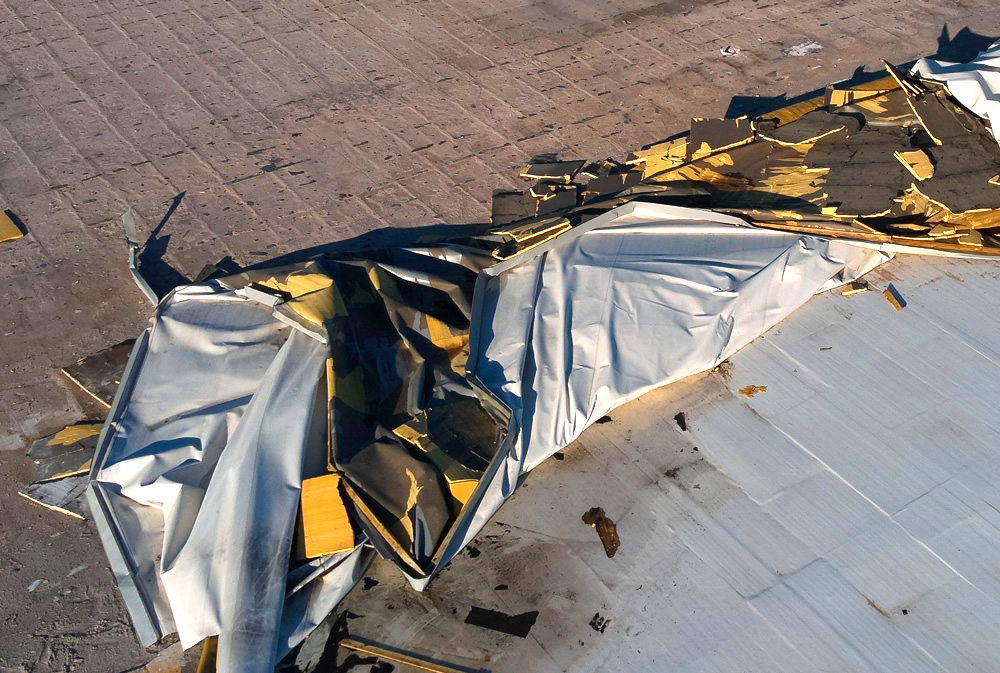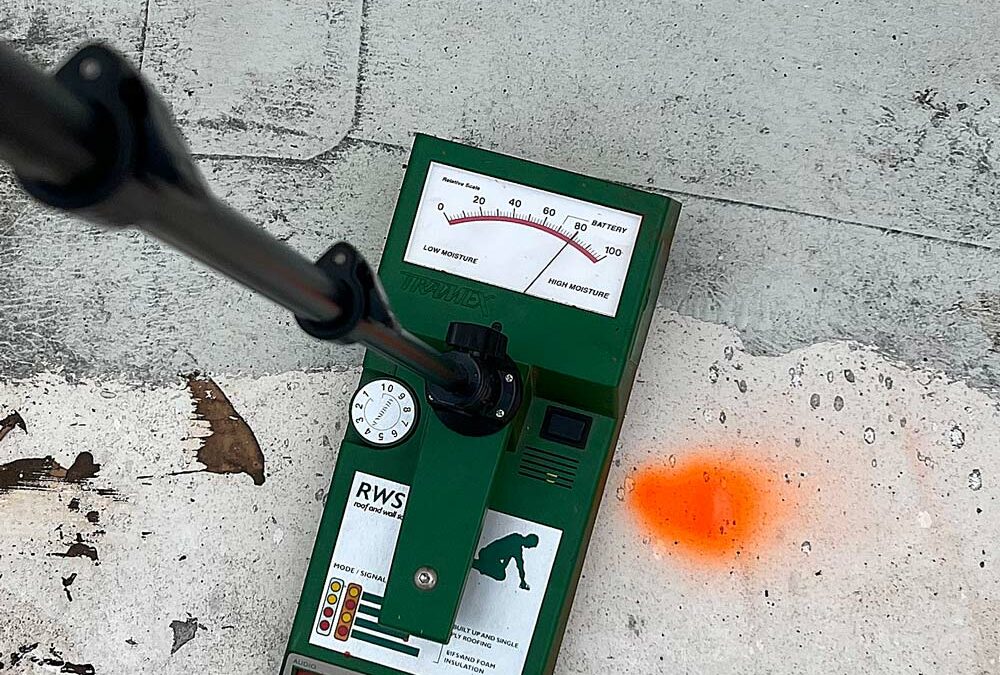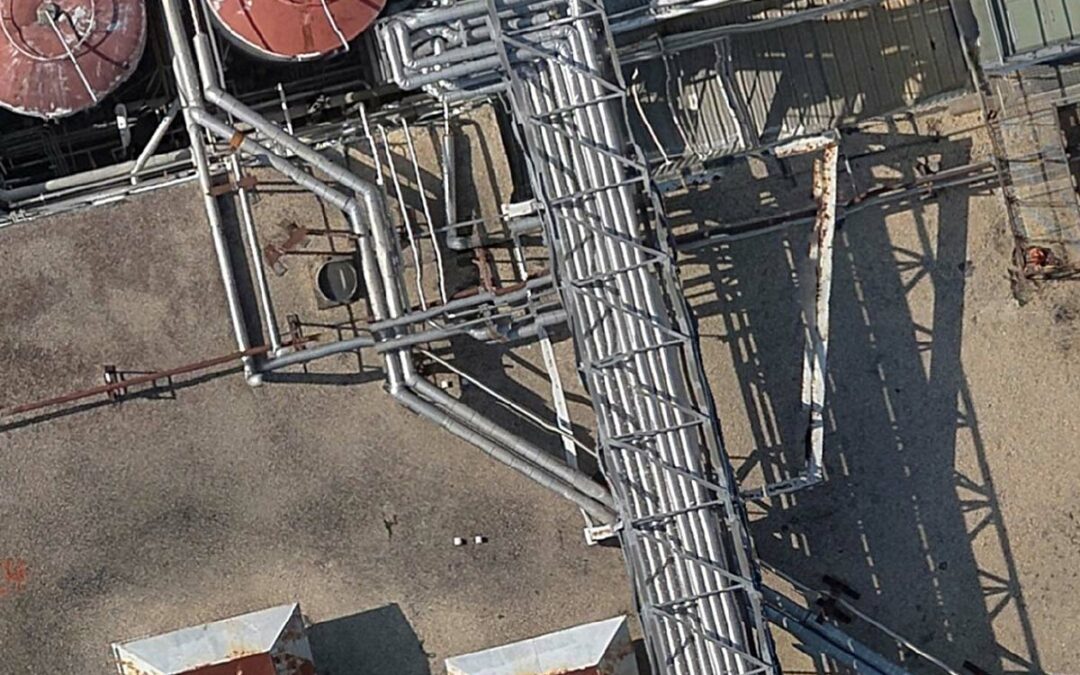A Resource for Contractors & Property Managers
Here’s What’s In This Article
- Battling the Wind & Rain: What’s at Stake
- Anticipating Storm Damage: Common Culprits
- Severe Storms & Hurricanes: Foundational Readiness List
- Preparing for the Approaching Storm: Final Prep List
- Dealing with Storm Damage: The “Fix it” List
Strengthening the roof’s structure, securing equipment on your roof, and protecting valuable interior assets from water and wind damage requires preparation long before storms like hurricanes, blizzards, nor’easters, ice storms, convective rainstorms, and supercells arrive. By staying watchful and incorporating a preventative maintenance plan to care for your roof, this severe storm & hurricane preparedness guide helps you can lower the chance of damage, spend less on repairs, and avoid business disruptions for you and your tenants.
With two more months remaining in this year’s hurricane season and winter storms on the way, it’s important to take time and evaluate your situation.
Battling the Wind & Rain: What’s at Stake
In the face of severe storms, roofing systems can be stretched beyond their limits, particularly at vulnerable points along the roof’s edges where materials might have loosened over time. Low-slope roofs, especially those neglected corners, seams, and flashing areas, are prone to vulnerabilities. Older or poorly maintained roofs are particularly susceptible. Drainage systems can also fail under the deluge, leading to leaks and ponding water on your roof.
Anticipating Storm Damage: Common Culprits
Below is a list of common damage that can happen to low-slope roofs during severe storms and hurricanes. It’s important to be prepared for these situations.
- Roof Failure: Complete or partial detachment of roofing components like membranes, flashing, caps, and covers, along with saturated roofing insulation & other substructures.
- Water Ponding: Wind-driven rain and torrential volumes of water resulting in flooding on the roof.
- Puncture Damage: Debris-driven punctures that allow water infiltration into the roofing insulation & backer boards.
- Roof Collapse: Structural integrity of the roof may be compromised—the added weight of water in the roofing insulation and substructures creates a dangerous situation needing a careful assessment.
- Equipment Loss: Damage to HVAC units, ducts, exhaust vents, fans, fan covers, solar panels, satellite dishes, chemical pipes & tubing.
- Mold Growth: The damp aftermath of the storm can foster mold growth in the building interior, posing health risks & structural deterioration.
- Economic Impacts: The potential loss of rental income due to damaged properties.
- Chemical Hazards: Possible leaks and contamination from damaged chemical pipes on the roof.
Understanding these potential damages allows for better preparation, swift action, and effective mitigation strategies to ensure the resilience of industrial roofs in the wake of hurricanes and severe storms.
Severe Storms & Hurricanes: Foundational Readiness List
Begin preparations well ahead of hurricane season or the onset of local storms. While hurricanes are a well-known threat, certain types of severe storms can emerge suddenly and unexpectedly. This foundational list gives you a valuable advantage in preparing for severe storms & hurricanes.
For those residing in hurricane-prone areas, it’s advisable to complete the following tasks before June 1, signaling the start of hurricane season. Residents in other parts of the country should undertake these actions annually before their specific storm season.
Create a Contact List: Compile a comprehensive list of emergency contacts, ensuring you have all the necessary personnel and services readily available.
Review Insurance Coverage: Thoroughly review your insurance policy well in advance. Make sure it’s up-to-date and you understand the coverage it offers. Seek clarification if necessary to avoid uncertainties before a storm occurs.
Develop a Communication Plan: Develop and communicate an emergency plan with your staff and tenants. Ensure everyone knows evacuation procedures, safety protocols, and communication channels.
Establish an Annual Roof Maintenance Plan: Working with your roofing consultant, establish an annual roof maintenance program. Regular maintenance keeps your roof’s drainage system working and addresses minor issues before they become major problems. Maintaining comprehensive records, including visual photographs and thermal drone inspections provides valuable insights into your roof’s condition.
Secure Roofing Equipment: Secure all roofing equipment—including HVAC condenser units, ducts, exhaust vents, fans, fan covers, solar panels, satellite dishes, chemical pipes & tubing. Strengthening these connections helps prevent potential damage in hurricane-force winds.
Enhance Structural Integrity: Prioritize replacing rusted & broken metal components and rotted wood, particularly around vulnerable areas. This proactive step strengthens your roof’s overall structure.
Inspect Lightning Conductors: Review the lightning conductors on your roof and make sure they are in working order. These conductors provide a path for lightning to safely dissipate and reduce the risk of damage to your building.
Plan Capital Budgeting: Create a three-year capital budget that factors in potential damage from severe storms. This facilitates the allocation of resources for repairs and minimizes downtime.
Ensure all Generators Work: Service and test your generator(s) well before storm & hurricane season to make sure it works. A functional generator provides critical electricity during power outages.
Familiarize Yourself with Evacuation Routes: Familiarize yourself, your staff, and tenants with evacuation routes, ensuring a clear understanding of safe exits during an emergency.
Preparing for the Approaching Storm: Final Prep List
As a hurricane or storm is on its way, it’s important to act quickly to protect your roof and property. Here’s a simple list of things to do when you hear about an incoming storm:
Take Pictures: Before the storm arrives, use a drone or camera to take pictures of your roof. This allows you to show how it looked before any potential damage, providing a clear record of its appearance. Using a drone for visual and thermal roof scanning enhances the precision of these visual records.
Check Your Roof: Look over your roof one last time to make sure everything is secure. Check vulnerable points along the roof’s edges, corners, seams, and flashing. Make sure nothing is loose.
Secure Equipment: As you inspect your roof, make sure all equipment is properly secured. This includes HVAC condenser units, ducts, exhaust vents, fans, fan covers, solar panels, satellite dishes, lightning conductors, and chemical pipes. If you’re unsure how to do this, seek advice from a roofing professional.
Protect Skylights: If your building has skylights, follow manufacturer recommendations for covering and protecting them. This precaution will guard against shattering and other damage due to wind-driven rain, high winds, and flying debris.
Make Temporary Fixes: Talk with your roofing expert as the storm approaches for some suggestions to help protect your roof, like using tarps or adding extract bracing in vulnerable areas.
Remove Loose Objects: Remove all loose objects and tools left behind by tradesmen—you don’t want them flying around during a storm. Flying debris can puncture the roof membrane and block drainage systems.
Clear the Drains: Make sure water can flow away from your roof by cleaning out gutters, scuppers, and drainage areas. This stops water from pooling up and causing damage. Test the drainage system.
Get Ready for Emergencies: Get supplies for an emergency. Make sure your generator works and you have fuel for it. Get long extension cords, lights, water, food, batteries, and a radio. If your roof needs fixing after the storm, buy enough food and drinks for the roofing team.
Plan a Checkup: Before the storm, make an appointment with your roofing company to check your roof when the storm has passed. A lot of people will need help, so set up your appointment early.
Dealing with Storm Damage: The “Fix it” List
After the storm has passed, take immediate action to reduce further damage. Follow these steps as a guide:
Report Emergency Situations: In case of severe roof issues that pose a danger, such as potential collapses, call 911 to ensure the safety of occupants.
Inspect the Roof: Conduct an initial examination of the roof to gauge the extent of damage along with any safety concerns.
Take Pictures: Immediately after the storm, use a drone or camera to take pictures of your roof. This documents how the roof weathered the storm for your insurance carrier. Traditional pictures provide a clear record of visible damage and drone thermal images can show hidden water damage.
Report Any Leaks: If leaks are detected, promptly contact your roofing contractor. Safety considerations may delay their immediate response, but make sure you’re on their schedule.
Initiate Insurance Claims: Begin the process of filing an insurance claim by promptly informing your insurance company. Reporting early speeds up the evaluation and repair process.
Be Wary of Scammers: Be cautious when hiring contractors after a storm. Scammers often emerge during these times. Stick with trusted professionals or verify credentials thoroughly.
Make Temporary Repairs: Discuss with your roofing contractor about making, quick temporary repairs to halt water infiltration. Use tarps, sealants, and appropriate materials to cover openings and safeguard the interior. Avoid attempting do-it-yourself (DIY) repairs for leaks, as well-intended fixes might make the problem worse.
Make Permanent Repairs: Make all required repairs, including the replacement of damaged roofing materials, reinforcement of connections, and resolution of any structural issues.
By using these guidelines in this hurricane preparedness guide, you can effectively navigate the aftermath of a storm, ensuring timely and strategic responses to storm damage. This approach safeguards your property, minimizes disruptions, and makes a seamless recovery process.
Disclaimer: While every effort has been made to ensure the accuracy and completeness of the information provided in this resource guide, we cannot guarantee its absolute accuracy. The information presented is for general reference purposes only and should not be considered professional advice. We do not assume any responsibility for errors, omissions, or inaccuracies in the content. Users are advised to verify the information independently and consult relevant experts or authorities when making decisions based on the content of this guide.
Read more about Visual Drone Inspections.


